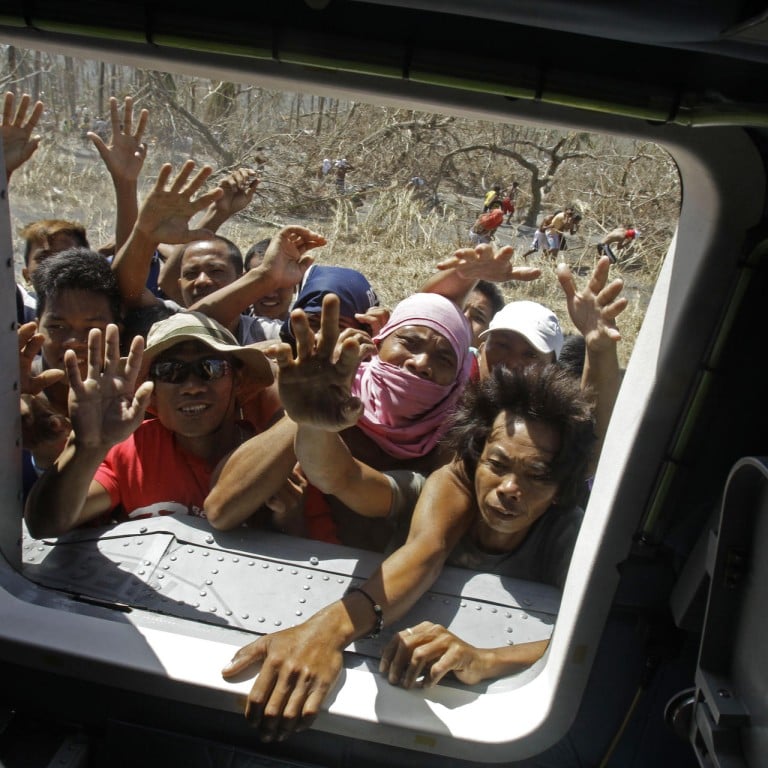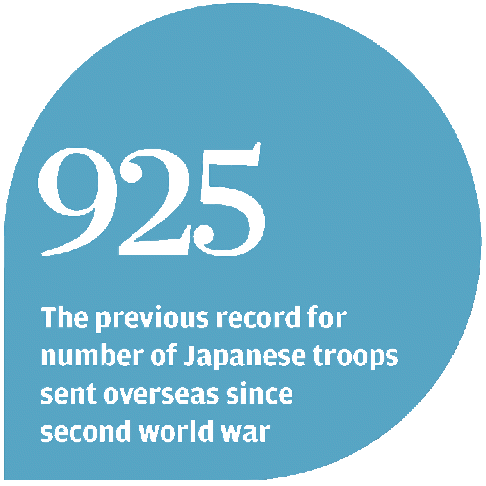
Japanese troops return to Leyte, scene of big second world war defeat
Tokyo sending two warships to typhoon-ravaged zone, 60 years after wartime occupation that left more than a million Filipinos dead
More than 1,000 Japanese soldiers will arrive in the Philippines on Friday to help in disaster relief, the largest overseas military deployment since Japan occupied the archipelago in the second world war.

Tokyo is sending two warships carrying six helicopters, seven C-130 transport planes, two KC-767 tanker planes and one U-4 multi-purpose support aircraft. The Americans have deployed a carrier strike group.
"They will conduct medical assistance operations and transportation operations," said Commander Takashi Inoue, deputy director of public affairs for Japan's Joint Staff.
Inoue said the troops' stay would be "indefinite".
Those who might worry about the Japanese would be ‘comfort women’
China's response to the disaster has been slow and widely criticised as less than generous. The world's second-largest economy initially announced it was giving US$200,000 and then raised that by US$1.64 million. On Sunday, it said it was ready to send rescue and medical teams.
Previous overseas missions by the Japan Self-Defence Forces (SDF), which adhere to the country's post-war pacifist constitution, have usually numbered in the hundreds. The previous record was 925 personnel sent in 2005 to Sumatra after the Indonesian island was ravaged by the Indian Ocean tsunami.
Other deployments have included UN peace-keeping missions in Cambodia and East Timor, as well as logistical activities in Iraq and naval refuelling operations in the Indian Ocean to back the US military in Afghanistan.
An advance team of 50 SDF members arrived in the Philippines yesterday.
"This will have some symbolism since they were here 68 years ago, but now they are coming in peace," historian Dr Ricardo Jose said.

"The Japanese troops will be visiting a place of defeat - Leyte is where they suffered so many ground losses," Jose said. He said that in November 1944, Leyte Province capital Tacloban was taken over by America's General Douglas MacArthur and the battle shifted to land. The Japanese launched counter-attacks in Ormoc and other towns but failed.
"When I see all the names of the towns ravaged by the typhoon, they are really all battlegrounds," Jose said.
He said the way Leyte was flattened was eerily similar to the way Manila looked after the war, "even the bodies on the streets". The occupation killed more than a million Filipinos, he said.
Jose said that many Filipinos had forgotten that period even though they studied it in school.
"The younger people only see modern Japan, the popular culture like J-pop, manga, anime and Toyota. This is their image of Japan," he said.
"The ones who might worry about the Japanese troops' presence would be the 'comfort women'" who continue to protest over their forcible use as sex slaves by Japanese soldiers during the war.
Manolo Quezon, the undersecretary for strategic communications, and grandson of the wartime Philippine president Manuel Quezon, said the historic return of Japanese troops showed that "old enemies can be friends".
He said that for the past 40 years, Japanese had participated in commemorations marking key events on Philippines soil during the second world war. "Every year on the anniversary of the massacre in Manila by Japanese soldiers, ordinary Japanese citizens place an origami wreath on the mass grave to express remorse," he said.
Quezon also noted that Japanese national Kenji Hirakawa, of Fukuoka, last week sent a donation of 200,000 yen (HK$15,475) to the Philippine embassy in Tokyo. Hirakawa wrote: "My father [a soldier] lies sleeping in a mountain somewhere in Luzon. I am enclosing here JPY200,000 yen for all the troubles my father may have caused to the Filipino people."
He was three months old when his father died.

